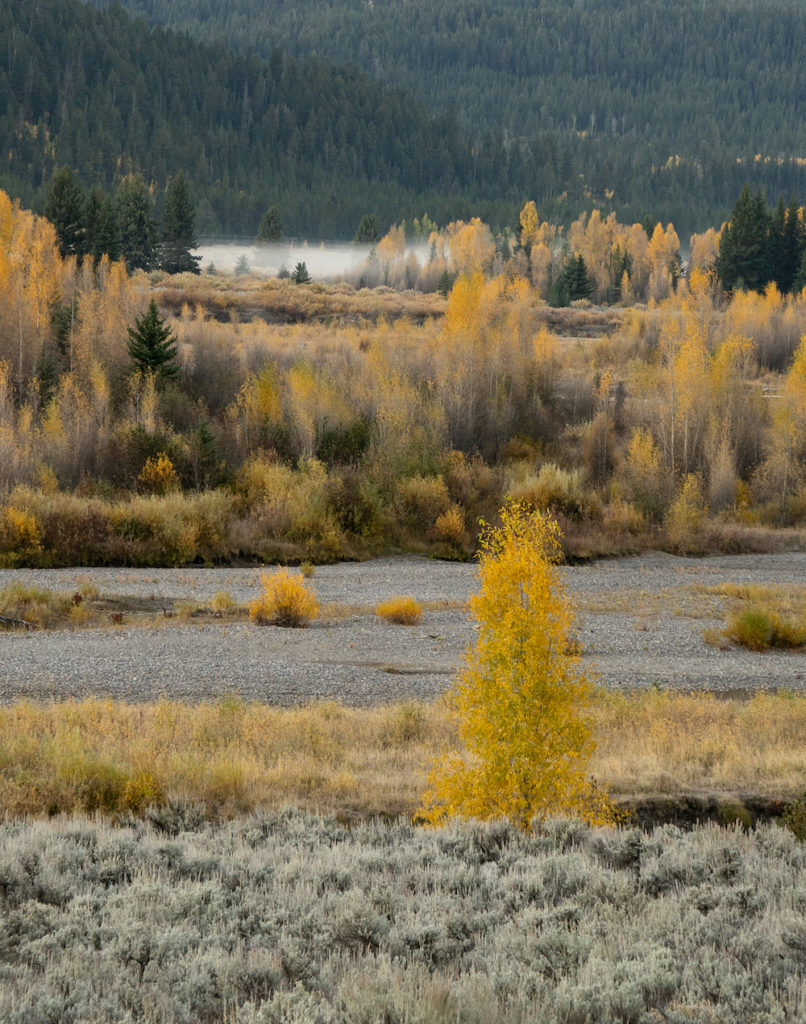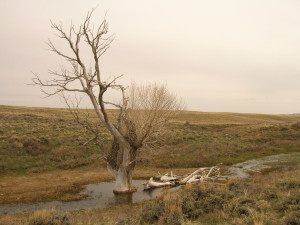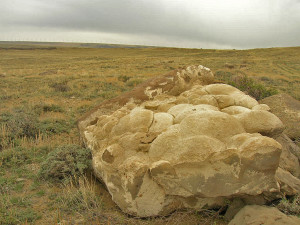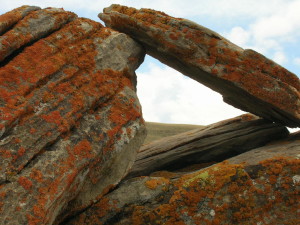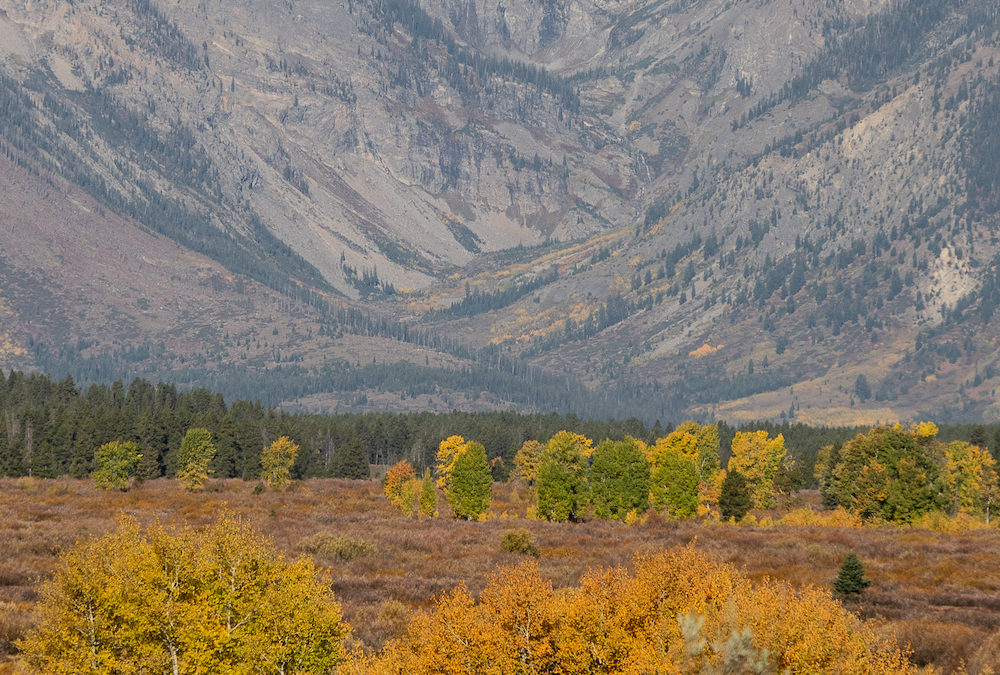

Possible headline: Dumb biologist struck by rattlesnake
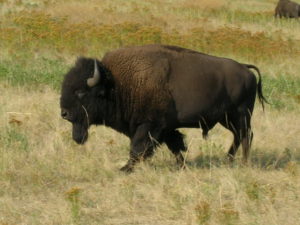
Part 1. People are stupid
Recently I saw a video of a woman and a bison. The bison was lying next to a walkway in Yellowstone National Park. The woman stopped to pet it on the head as casually as if she was petting a favorite horse. As if brushing off a fly, the bison tossed its head at her. She stepped back and made a face, as if scolding it, then reached out and touched it again. Again the bison tossed its head. Amazingly, the woman walked away without being gored, trampled, or obliterated by the 1000-pound wild bison.
Part 2. People are stupid
Driving down a narrow canyon somewhere I can’t now remember in Colorado I came upon a bighorn ram with a beautiful full curl. It was late November, the end of the rut. The ram was standing on the double yellow line, broadside to traffic, with no apparent interest in anything but the slope in front of him. At the time, I still had my Tercel, a car seemingly half the size of the ram. I had never seen a bighorn sheep before; I shut off the engine and watched.
After several minutes, a brand-new, bright red, dual rear-wheel, Dodge Ram 2500 diesel came up the canyon. The ram did not move. The truck sat a minute and then slowly rolled forward. The ram held his ground. The truck moved another few feet forward.
The ram politely stepped back one step, and then one more. The truck began to inch ahead. The ram took another step back, lowered his head, and let loose with all of the power of the rut directly into the front quarter panel of the shiny truck.
I laughed, of course. The expression of the man driving the truck was beyond description.
The ram, head held high, stepped back; clearly, he won this round. Another step back. The truck driver writhed in his seat, livid. It seemed his instinct was to immediately get out to check damage. Instead, he decided to move ahead. Was it an attempt to flee to safety? The ram stepped back again, lowered his head, and connected with a new spot on the front quarter panel.
Concealed weapons permits were not big then and I wasn’t yet fully aware of how many people carried weapons in their rigs. I writhed in my seat, in mirth. What more could a girl new to the west ask for than a show like this?
I don’t remember what broke the stand off. The ram finally turned into the canyon below the road and the truck continued up the canyon.
Part 3. Sadly, I count as people
A few years later I was working on the National Bison Range in Montana. I spent my days hiking everywhere, mapping plant communities, taking photos, enjoying the wildlife.
Early one morning, while the world was still cool and snakes were not warmed up, I found a den. I was standing on a slope deciding whether to go up or down. I turned up, picked up my foot, heard a rattle and just continued spinning back down to the point where I began. I turned to look. Two large snakes, two to three feet long, were coiled side by side. Next to them was a ball of snake babies. The babies were a wriggling mass. As I watched, one of the larger snakes disappeared into a hole under a rock. The babies, one by one, extracted themselves from the ball and followed – nine in all, each about 10 inches long. As the last baby went into the hole, the second larger snake followed.
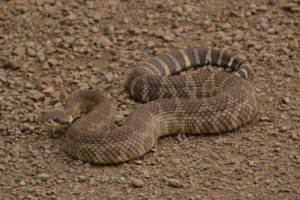
Rattlesnakes are fascinating and fabulous. They are also much maligned and persecuted creatures. People go out of their way to run them over, shoot them, burn them out, and kill them with any handy tool, shovel, or ax.
A rancher, well into his 60s, once told me that he had been killing them since he was a kid. “I used to see a hundred or more a year. Now, I don’t see more than ten a year.”
“That’s because you killed them all,” I responded.
“Well, yeah, I guess so. I hadn’t thought about that.”
Really. He said that.
Back to the Bison Range. One day, after a long, hot day of hiking around on the range, I was driving the loop road on my way to the maintenance shop. Climbing onto the flat above the river, there was a rattlesnake in the middle of the road. It was about 3 and a half feet long, basking in the sun, unperturbed by my truck. I went around it.
Then, I stopped. I looked back. Some stupid tourist will either run over it or will try to get too close and get bitten. Damn.
There were half a dozen elk antlers in the back of the truck. I collected them as I hiked and added them to the visitor center pile every few weeks (…or took them home. One of those two things, I can’t remember which). I fished out the longest one and walked back to the snake.
I told the snake it was a bad idea to lie in the middle of the road and maybe it should move to the side. It shifted back, not coiling, but changing from a long line of snake into a wavy line of attentiveness. I reached out with the antler and gently prodded it. The snake moved away, closer to the edge of the road; I prodded it again. It moved off the road a foot or two.
Just a little further, I said. You’re too likely to go back to the road when I quit poking at you. Another prod, another few feet.
One more time, just a few more feet, I thought. By now, the snake was moving backward but was also in a full coil. Yes, of course, I know what this means. I reached as far as I could with the antler, using my natural length to keep as much distance between us as possible and I gave it one.more.poke.
It struck; I leaped. We both turned and went our own ways. We both stopped and looked back.
They say the striking distance of a rattlesnake is more or less equivalent to its length. The snake was three and a half-ish feet long. My arm is three feet, the antler was three feet, I’m six feet… the math may or may not have worked in my favor but I went with it.
I remember throwing the antler into the back of the truck and saying out loud, “Headline at 11:00, biologist struck by rattlesnake while saving stupid tourists.”
I can imagine the snake going back to its snake buddies and telling them, “you would not believe what happened to me today.” I know I did. And, we both lived to tell the tale: people are stupid.
Societal Insanity v. A Safer World
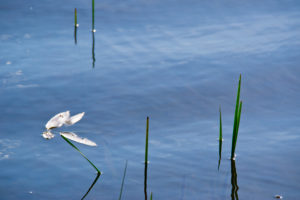
In 1997 I moved from western Massachusetts to Maine. Several people asked me, “Are you going to get a gun?” I laughed. I thought this was an odd question.
When I left Maine to work in Alaska, many people told me, “You better get a gun.” I guess Alaska is a scary place relative to Maine.
After that summer in Alaska, I spent the winter in Utah. I went back to Alaska the next summer and then worked in Wyoming the following winter. I moved to Montana. Each step along the way, people said the same thing, “ You better start packin’.”
I left Montana and moved to eastern Washington State. My boyfriend at the time gave me his shotgun. It remained in the back corner of a closet until we broke up and he asked me to return it.
Now, I am leaving Washington. I have bought a camper for the bed of my pick-up and plan to spend a few months, maybe years, cruising around to the many places I haven’t had time to visit during other busy travels. And, once again, people have begun asking me if I have a gun or if I am going to get one.
I have never owned a gun. I have used them for clay pigeon shooting on occasion, I have carried one as a mandatory safety precaution in polar bear country, I shot at woodchucks when I was a teenager.
How many school shootings, mass shootings, random shootings have there been this year? How many people have been killed in the U.S. this year by a gun, self-inflicted, accidental, or intended?
I’m not anti-gun. I don’t think gun control will resolve all of the insanity of our society.
I may lead a charmed life.
I choose to step into the world unarmed. I believe that adding a gun to my travel gear will not make me safer.
Rather, I believe that choosing not to carry a gun will make the world safer.
High Plains Bag Lady
A few years ago I was sent to Wyoming to watch a red-tailed hawk nest. I spent days walking the sagebrush plains. I wrote the following during my days there.
There are places in the world where wind is an infrequent visitor. It arrives in advance of a storm and fades away as the storm passes. Perhaps it drops in like an old friend for a friendly afternoon tea and then goes merrily on its way. Wyoming is not one of these places.
My job this week is to get a red-tailed hawk used to people. I seem to give a new meaning to the phrase “odd jobs.” So here I sit in the middle of sage country with a lot of wind and few birds zipping by me. The ground squirrels chatter and squeak their alarm calls, diving into their burrows only to pop up again a few minutes later. The red tail comes and goes, truly disinterested in me or my meanderings around the place. An archeological dig is about to happen in this place; an ancient buffalo kill site is what they think is here.
All around me on this spring day is low sagebrush, molded to the ground by wind and cold. Last year’s flower stalks stand bravely against the unrelenting onslaught of moving air. A few grasses are scattered between; they too stand defiant. Mixed into this is the first push of spring flowers, delicate white flox being the most common and the lowest, with purple forget-me-nots and yellow prairie rocket tucked in here and there. There are some shrubby thorny things, the only plants to stand more than a foot or two off the dry, rocky, red-brown earth. In the draws, cottonwoods stand their ground. This time of year there is water; it courses past the old trees immersing their roots and lower trunks, giving them another year.
One tree in particular seems to have begun a new life. The south side of the tree, with tall, long extending branches is dead. The bark is completely peeled away, the trunk underneath bleached white. The north side of the tree has a width of bark still intact and a whole series of branches reaching skyward, buds thrown open to the early spring warmth.
There are boulders strewn about, not lifeless rock but living stories. Many of these look like pillow basalt, the stuff created when hot lava meets cold water, cooling and setting underwater. These boulders are rounded globs of rock with a coating of limestone, like the beginnings of coral or mineral deposits left in a well-used teakettle. Some of them look like giant sheets of bubble wrap, others just random bowling balls left out in the sun. There are other rocks as well, flat slabs stacked and piled, alone and in clusters. These rocks tell no story of their own but they are covered with orange, yellow, white, green, and black lichens. Rings, splatters, and ribbons of color; lives of time.
I found a buffalo horn high up on the ridge to the south yesterday. It is old. Long before man thought of pipelines or highways or windmills it happened there. The keratin is peeling and separating in layers; inside the horn all around the fraying edges are orange lichens, tiny beginnings of a new era. It gives me a small taste of the continuum of this land.
This is not a pristine place. Just to the south, not even out of earshot, is interstate 80. Through a narrow notch in the hills I can see the ceaseless stream of big trucks moving America. To the east, a long stretch of windmills rises from the land. I counted 165 but there is another bank to the northeast, mostly out of sight. Yesterday, this land of wind gave them a reprieve and they stopped moving for a short time. Today, they turn lazily, the wind still not up to its full strength. Running east to west right under where I sit is a pipeline. The scar for this major endeavor is remarkably nondescript, a thin line of grasses with sage encroaching. I believe this pipeline carries natural gas and next to it, is a fiber optic cable presumably for phones. Aside from this scar the only thing marking this pipeline is a series of random posts stating the pipeline’s presence and whom to contact before digging. I wonder if the badgers or ground squirrels ever call.
There’s a two track that follows the pipeline. This too marks the land, but here in the open, two tracks go everywhere. They are as unremarkable and unmarked as the wind.
Still, there is solitude here, a peace or perhaps just a calm that pervades everything. The sage, the birds, and I are waiting. The air will warm again, the sun will dominate, and the wind will be hot and dry. The peace comes from having nothing but the sound of wind in my ears, punctuated by the birds and ground squirrels occasionally. The calm comes from the expanse of ever-patient earth that also seems to be waiting. As if to say about the pipelines and highways and windmills, “This too shall pass.”
I try to think about days long ago when this plain was truly endless, when no roads, towns, or fences had cut it into pieces, when you could ride for days or weeks with only rivers to block your path. My mind is too modern, too confined to the easy path. The stamina and fortitude of the first people here is astounding; the determination of the first white settlers virtually unknown in this time.
I wonder how old some of these sagebrushes are. Their stems gnarled, twisted, and cracked, their branches lying over with the wind. They are a study in the area’s prevailing winds.
The archeologists have been digging and sieving for three days now. They have previously dated hearths here, one to 330 years ago and a second to 1200 years ago. Today they dug up an arrow point that, by its shape, is about 2000 years old. They have found bison and antelope bones with tool marks on them. Apparently elk kills are almost never found.
I’ve found a handful of ticks this last week. Usually at the end of the day, on my way home, I find them crawling on my pants or my sleeve. This morning I found a tick attached to my hip at my underwear line. Ick. It was just getting embedded; I picked it off and flushed it. I’ve had the heeby-jeebies all day. Every minor discomfort, itch, tweak, and twinge becomes a tick burrowing into my flesh. I don’t mind them so much when I pick them off my clothes or easily exposed flesh, like my calves or forearms. When I find them crawling up my neck and into my hair or when they are actually attached anywhere, they gross me out. Seeing them on vegetation at the tip of a branch extending themselves as far as they can reach, stretching, clutching like a small child desperately seeking to be picked up, well that’s just icky. No way around it.
When I was leaving the truck to walk earlier, I was collecting my camera and coat and field book. I looked up to see a big Black Angus bull meandering toward me. I waited in the truck. As I sat and watched he stopped in a spot of open soil, he looked at the truck and started pawing the ground, snorting, and lowing. The dirt went flying up along his back, his tail twitched back and forth. One foot, fling, the other foot, dirt flying. He moved a few feet closer, now about 50 feet away, stepped onto a ground squirrel mound and pawed the earth again, bellowing a challenge to the silver intruder in which I sat. He watched the archeologists, some on this side of the fence, some on the other. He bellowed again and then circled around the back of the pick up and turned northeast along the fence line. I followed, watching him pick through the sage and up into the brush, over the ridge and out of sight, my great wildlife encounter for the day.
The wind has returned to its normal potency today. Walking into it causes my face to stretch and pull away from my teeth. My mouth dries, my clothes adhere to my skin. Trying to stand, I get buffeted, tipped, and thrown off balance; walking with it, I fly. The sun is strong and warm but the wind whisks away that heat with my breath. The ground absorbs the heat and in small quiet pockets, among shrubs or in the depressions the heat lifts from the ground engulfing me with the scent of sage and momentarily making me think long underwear is too much for this day. Looking through my binoculars across the plain I can see heat waves, shimmering, distorting. As if there isn’t enough wind driven motion the heat waves add their efforts.
I’ve been picking up garbage as I walk. The highway is a great provider, Walmart bags, packing slips, shipping manifests, hotel receipts, coffee and soda cups, oil containers, chip bags, sandwich wrappers, beer cans, even a kid’s disk sled. The pipeline contributed dozens of yards of blue, pink, and orange flagging with a smattering of green and yellow thrown in for variety. The wind hurls these things great distances until they finally snag in a shrub or get so tangled in grasses or fencing that they can no longer move. There are always enough plastic bags flung into shrubs to collect the other garbage I find. I have become a high plains bag lady.
This morning as I was walking I found an arrowhead. It was lying in the path, just so. I had cut across a steep sandy bank above the creek and found a fox den. It was the perfect spot, invisible from the ledge above, steep and sliding sand protected it from below. I stopped to look back at it from the bluff to see how the boulders were protruding from the eroding bank and how one of these blocked sight of the den entrance from the other side. As I turned back to the cow path at the top of this bluff the arrowhead leapt into view. It is small but nearly perfect, the brown color of pipestone. I think it is a reward for packing out the garbage, a token of appreciation for just paying attention and for remembering that this was not a dump but that there had been lives here before.

